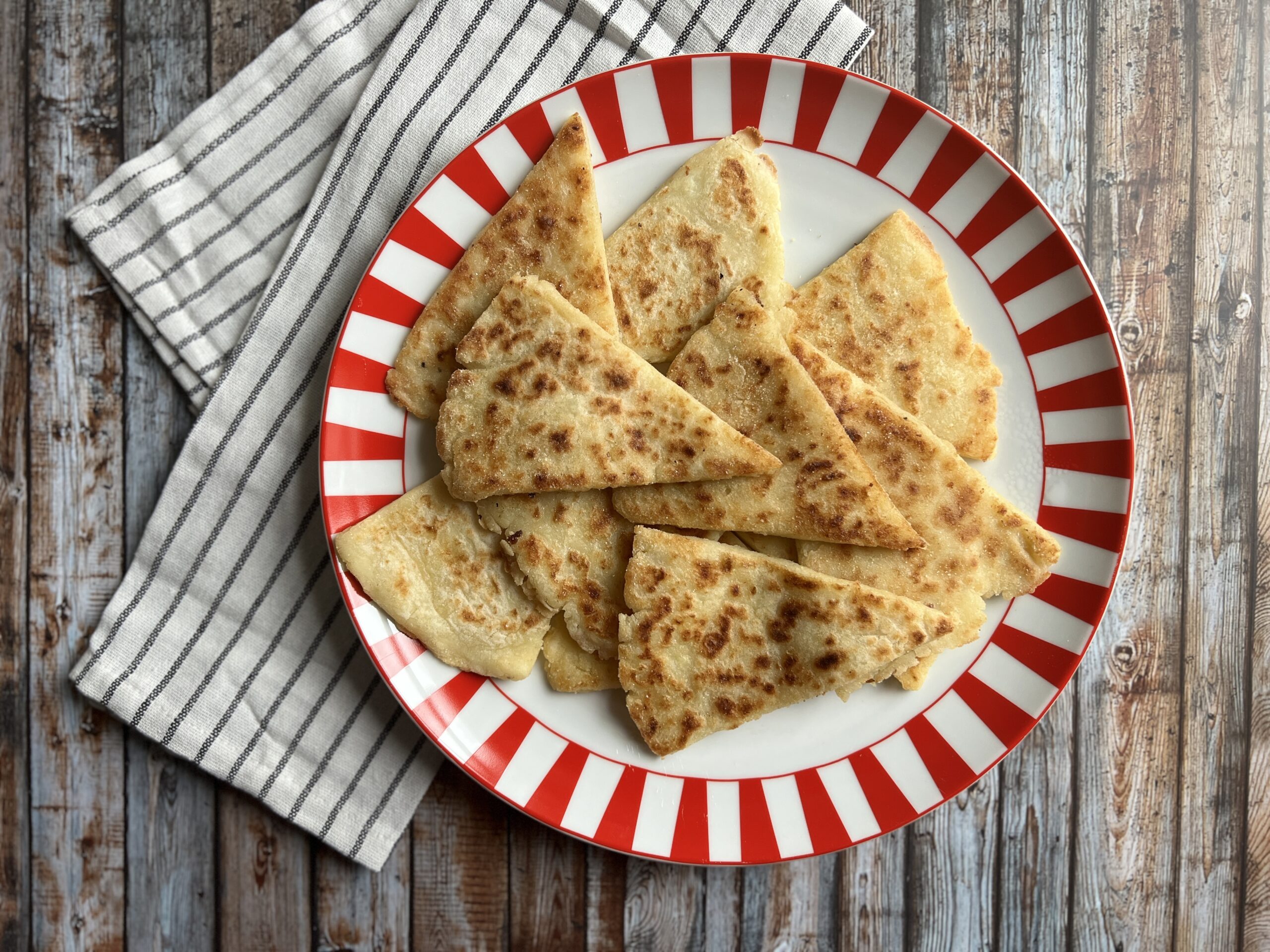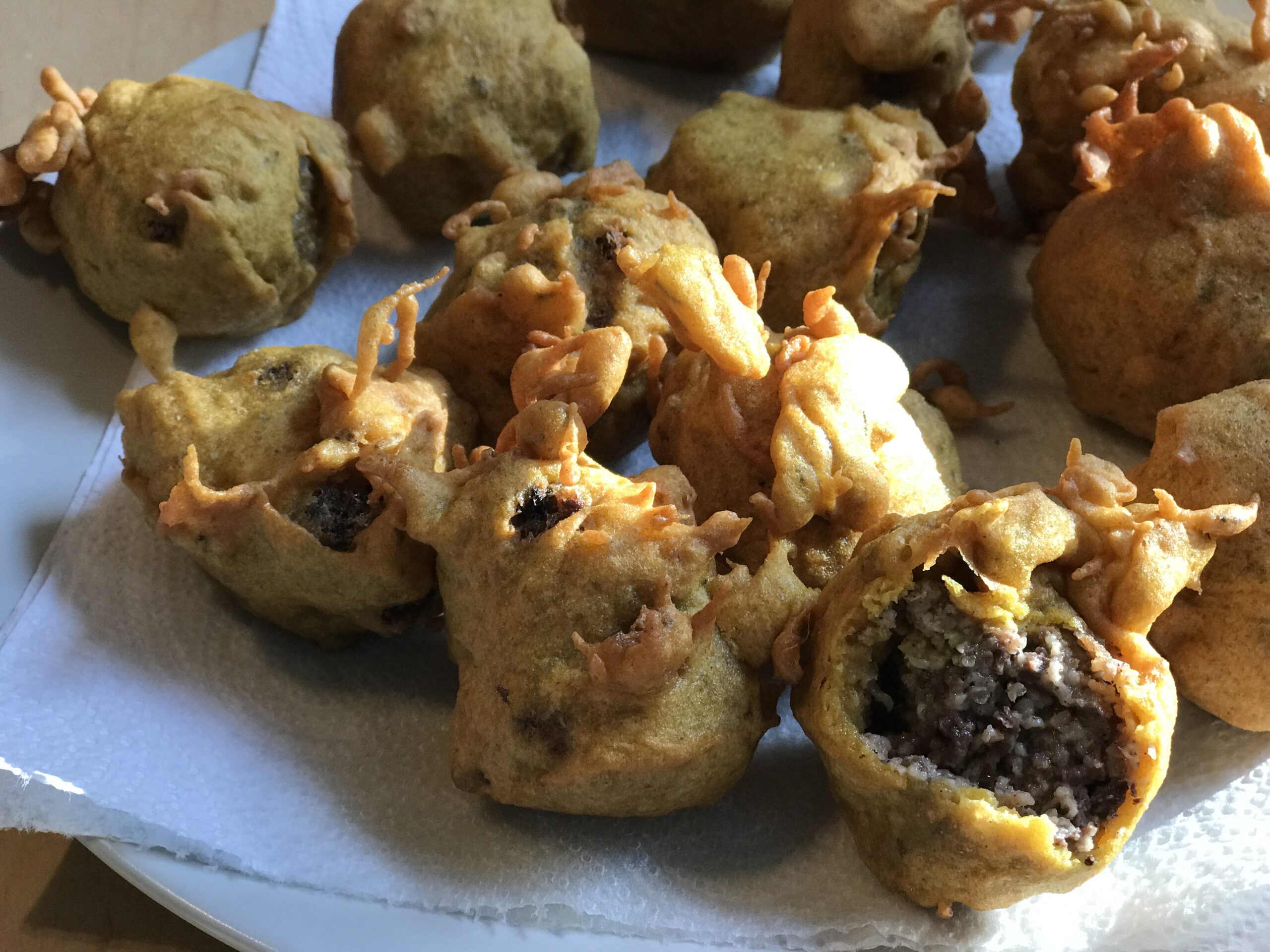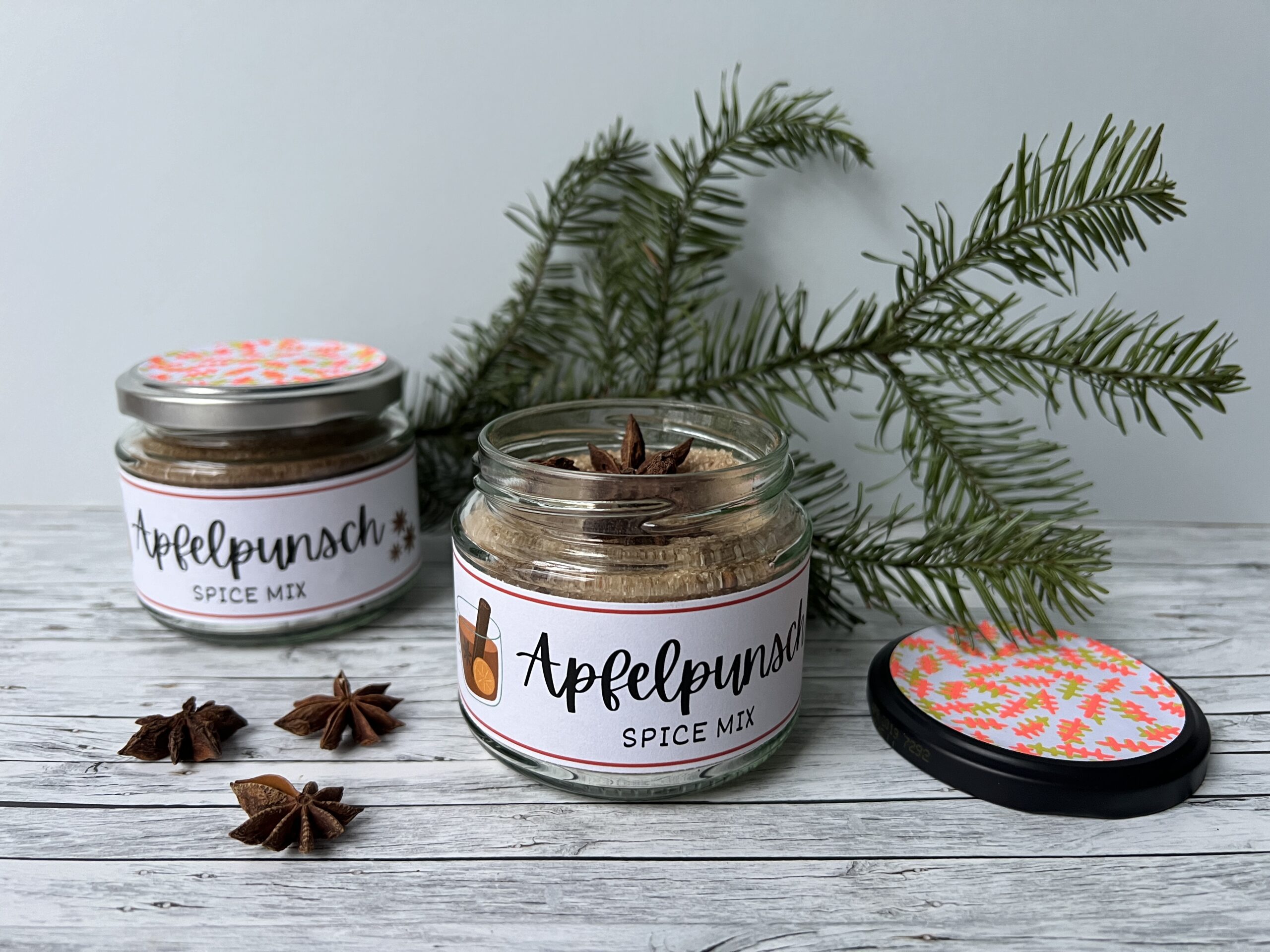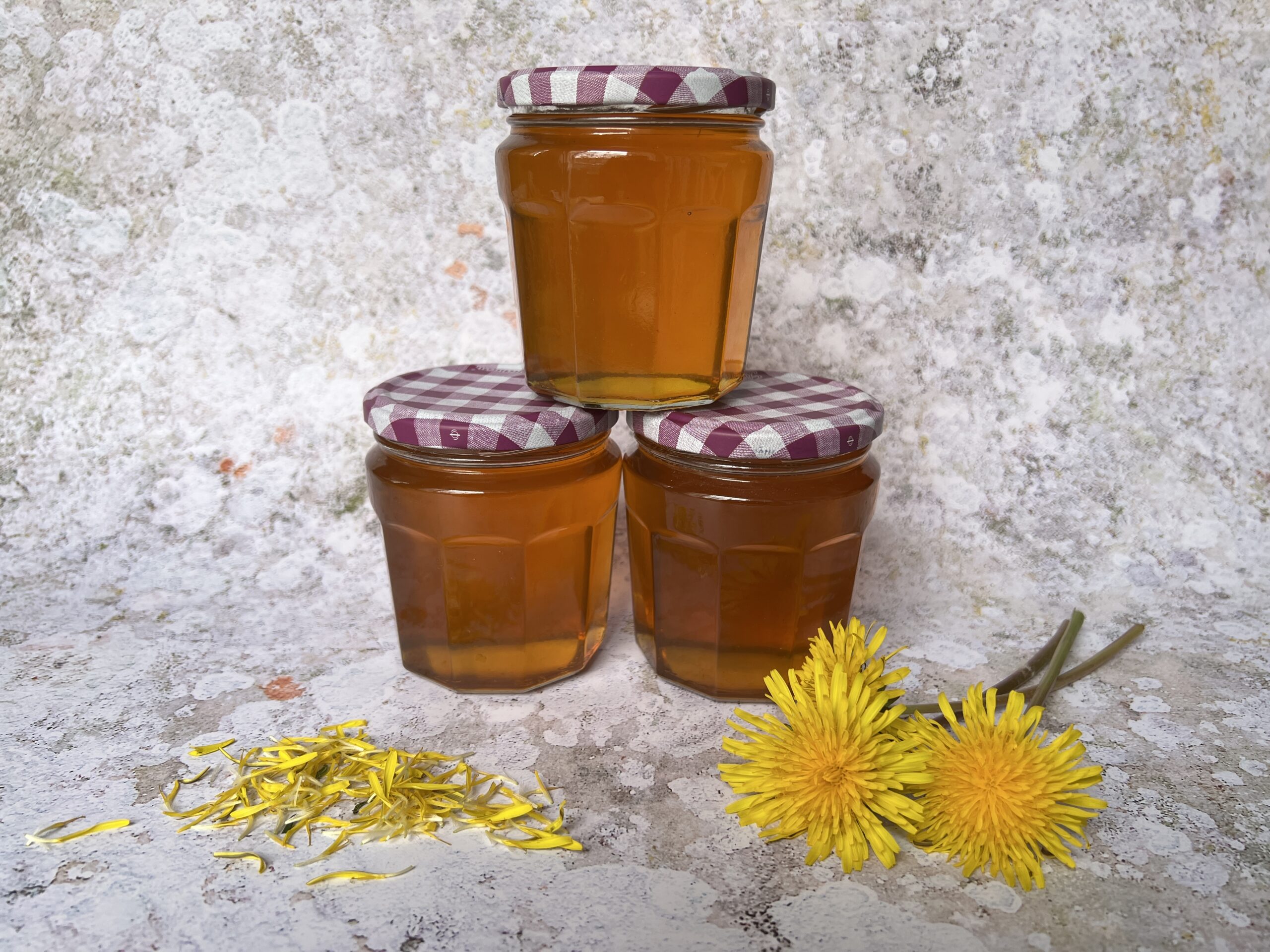
Dandelion Cordial or ‘Honey’
One of the very first foraging recipes I ever made, many years ago, was dandelion cordial. I was visiting my sister in semi-rural Eastern Germany with my eldest son, who was about 2 at the time. They have a very big field out the back, which was covered in dandelions, and we collected a big bucket full and made several litres of cordial. It’s really easy to make, and you can make so-called dandelion ‘honey’ in the same way, you just let it thicken for longer. It’s not actually honey, but it has the same colour and a very similar taste to honey, so you’ll sometimes find it referred to as ‘vegan honey’ since it is bee friendly.
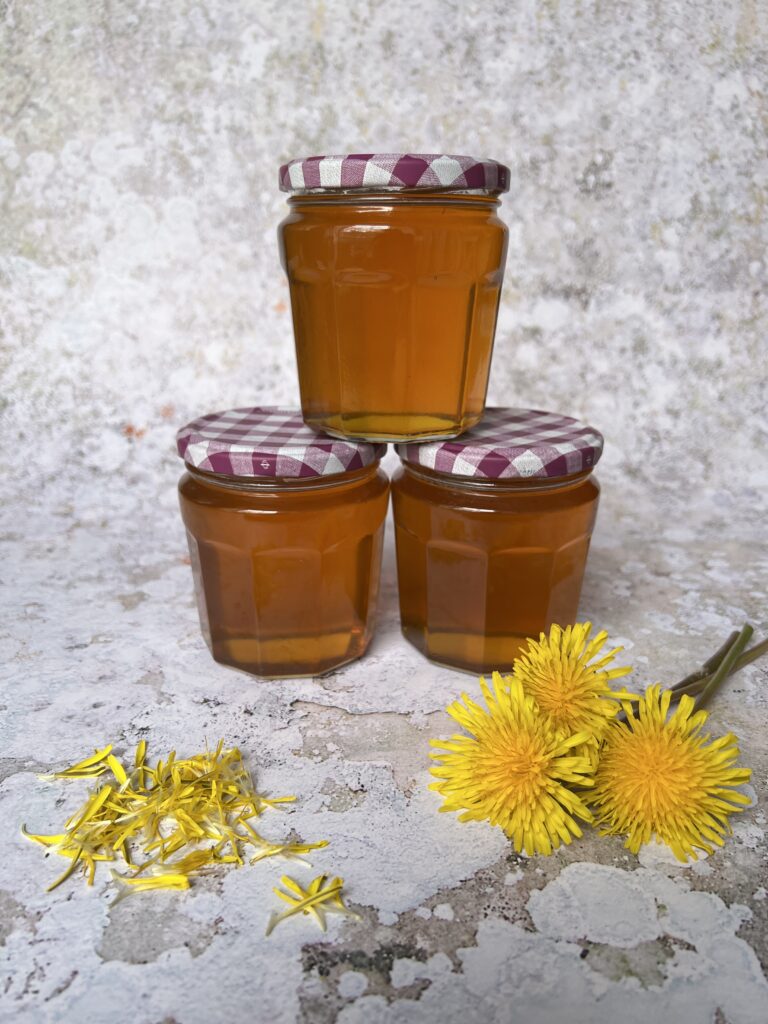
The principal for both the cordial and the ‘honey’ is the same – first you make an infusion of dandelion flowers, then you strain and mix the liquid in a 1:1 ratio with sugar. Then simmer and thicken to either cordial or honey consistency.
Ingredients
(for ca. 1 litre honey or 1.5 litres cordial)
- 3 large handfuls of dandelion petals
- 1 lemon, cut in to slices
- 1 litre water
- approx. 1 kg caster sugar
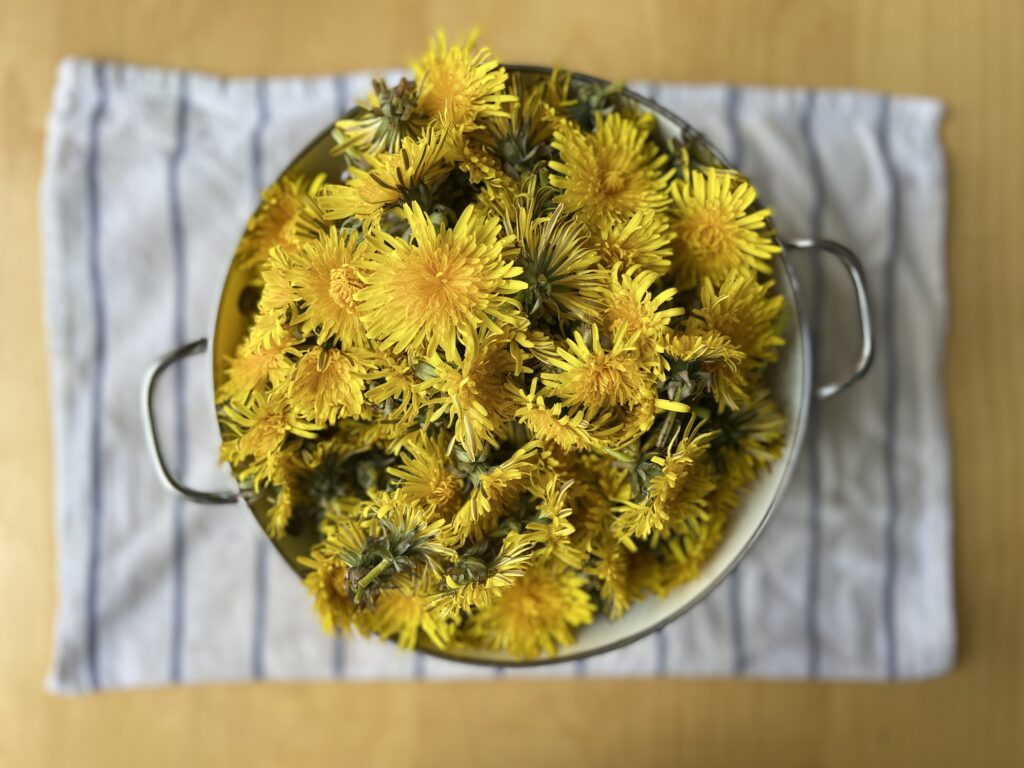
Directions
- Shake the flower heads to remove any dirt or bugs. Don’t wash them, as this will wash away the pollen too. The petals will get boiled and later strained, so you don’t need to worry if you don’t get them 100% clean by shaking.
- Pull all the petals off the dandelion heads and discard the green parts as these can give a bitter taste to your cordial or honey.
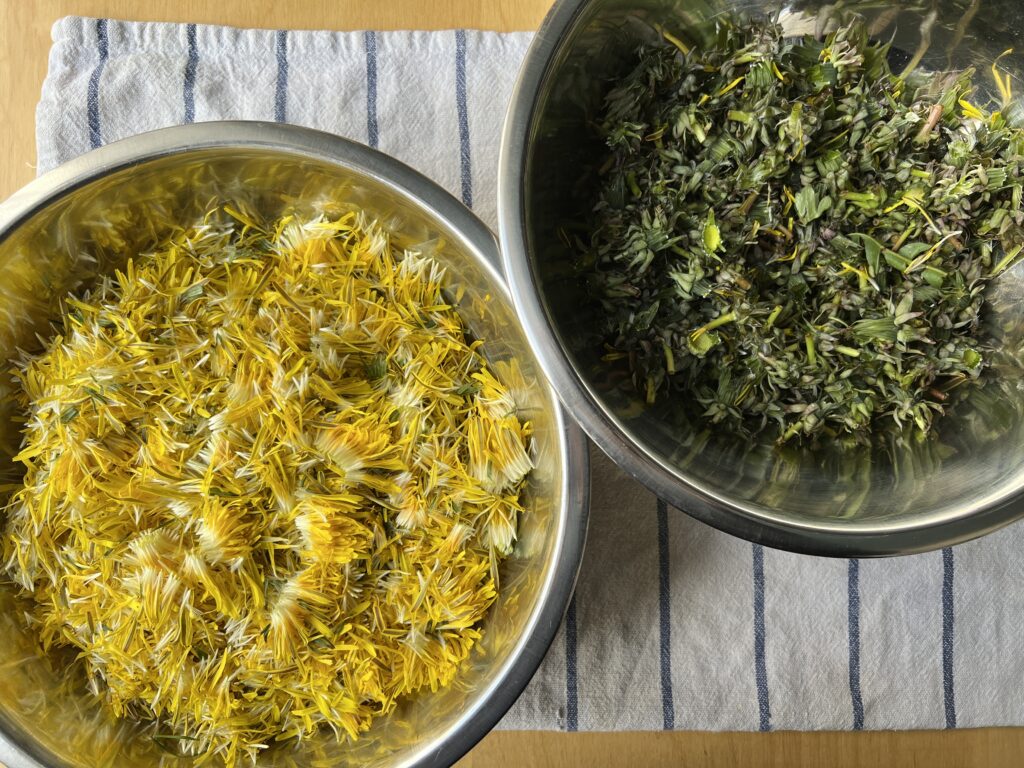
- Place the petals in a large saucepan, along with 1 litre of water and the sliced lemon.
- Bring the water to a boil, then reduce the heat and leave to simmer for 30 minutes.
- Remove the saucepan from the heat, cover with a lid and leave to infuse for at least 6 hours or overnight.
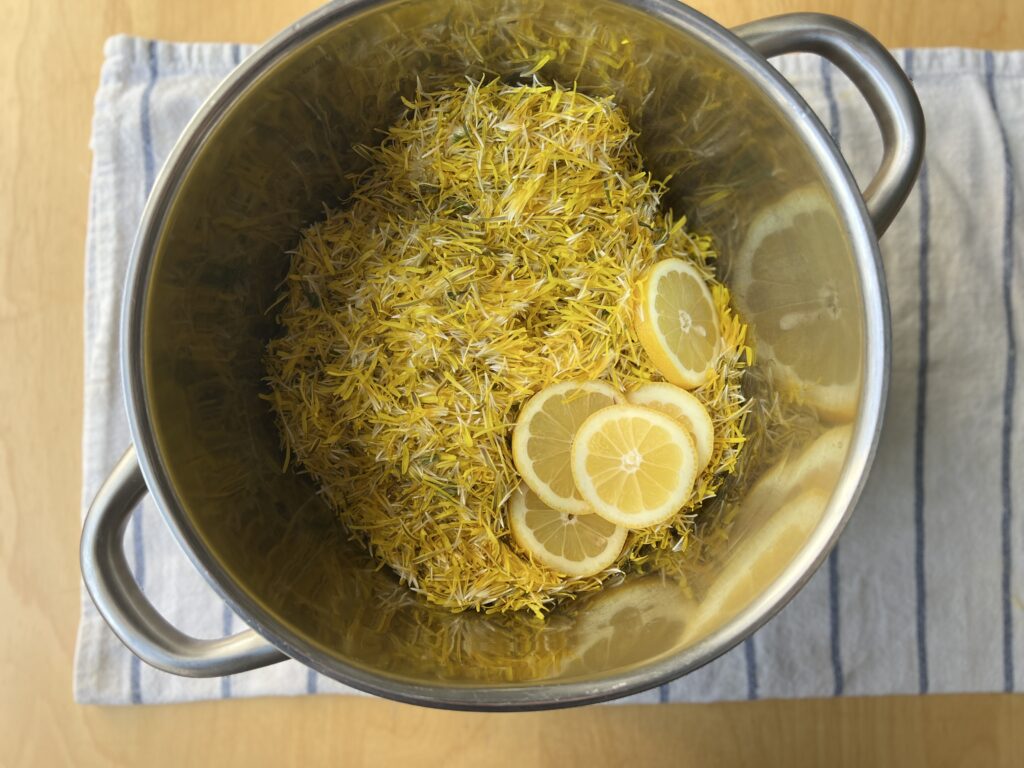
- After the liquid has finished infusing strain the liquid through a muslin in to the bowl, discarding the petals (give the muslin a good squeeze to get all the last juice out).
- Weigh the strained liquid, then measure out the same amount of sugar. It should be closed to 1 kg.
- Give your saucepan a quick rinse to get rid of any leftover petal bits, then pour the infused water back in and bring to a boil. Gradually add the sugar to the boiling liquid whilst stirring, until the sugar is fully dissolved.
- Lower the heat, and leave to simmer until it reaches desired thickness. The longer you leave it to cook, the thicker it will be. For cordial, this will take around 15-20 minutes, you just want it to thicken a little. For honey, it may take up to an hour. Keep in mind that it will thicken a bit more as it cools down.
- As the amount of liquid you have left over after infusing the dandelions can vary, the amount of sugar amount can too, and so can the amount of time you need to simmer. Test it regularly, and keep in mind that will thicken some more as it cools, so aim to take it off the heat before it reaches your desired thickness. If you cook it for too long you risk it caramelising. Also note that if you change the batch size (e.g. halving or doubling the recipe), the time needed to simmer and thicken will vary.
- While the sirup is still hot, fill it into clean, sterilised glass bottles for the cordial, or jars for the honey. Once it’s cooled down, you can mix the cordial with mineral water for a refreshing drink, or use the honey in any way you would use regular honey too.
Warning Note
Make sure to pick your dandelions from a spot that is free of pesticides, away from the road and car fumes, and not on a popular dog walking route (you can probably figure out why…) We have two parks near us that have fenced in, dog free zones where dandelions are allowed to grow wild, so that’s where we go to pick ours. Dandelions are fairly easy to recognise, but always be 100% sure of what you are picking – if you’re not sure, don’t risk it!
Also, dandelion flowers are an important source of nectar for bees, especially early in the season. Only pick as much as you need, and leave plenty flowers for the bees (especially if you don’t have a big field with an abundance of dandelions like my sister).




